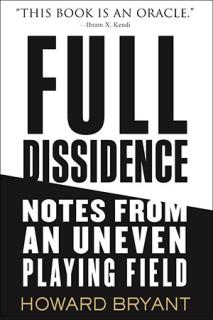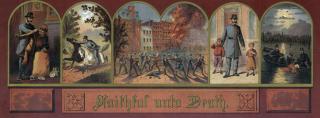Advertisement
What, it must be wondered, is so valuable that these truths, fatal to virtually any other profession, are tolerated, protected, and justified when exposed regarding police? Nearly three thousand killings by police over a three-year period—several of unarmed citizens and captured on video—with a less than virtually nonexistent conviction rate of officers. Evidence that police officers are often aligned with white nationalist organizations. False confessions. Fraud. Illegal surveillance. Billions paid out in civil settlements. The National Center for Women and Policing reported in 2014 that 10 percent of American families experience domestic violence, but for police officers’ families, the number is two to four times higher, one of the highest rates in the nation, though given the issue’s national coverage a first guess would be that the highest rate involves Black football players. Though steroids are largely associated with sports, there is a culture of anabolic steroid use among police, as documented in University of Texas professor John M. Hoberman’s searing book Dopers in Uniform.
If police allow themselves to be the enforcement arm of whiteness, then the natural target is the nonwhite.
This is the evidence, not conjecture or theory, of an institution facing enormous challenges, one in desperate need of reform and oversight. The reality repudiates the public relations. The transgressions, as widespread as they are disparate, explain at least in part the existence of the propaganda, for actual policework is neither clean nor often heroic. After an officer with the Cleveland Police Department killed 12-year-old Tamir Rice within two seconds of encountering him in 2014, the department paid his family a $6 million settlement of taxpayer money (without admitting wrongdoing, of course) and then publicly and shamelessly said the family should donate the money to charity. Killing a child, then painting the survivors as greedy lottery winners, isn’t quite the appropriate selling point for Cleveland Indians Law Enforcement Appreciation Night.
In April 2019, USA Today reported that over the previous decade, 85,000 police officers had been investigated or disciplined for misconduct. “Officers have beaten members of the public, planted evidence and used their badges to harass women,” the report read. “They have lied, stolen, dealt drugs, driven drunk and abused their spouses.” The report documented more than two thousand examples of “perjury, tampering with evidence or falsifying reports.” Twenty officers were the subject of at least one hundred allegations each but remained on the job.
It is not simply power that prevents the public and the corporate machine from challenging law enforcement. (The Catholic Church was an equally if not even more powerful institution and yet has not recovered from its breaking of the public trust and quite likely never will.) The critical difference, beyond the one-liners-and-ammo formula of Hollywood cop-buddy movies, beyond the Blue Lives Matter police union intimidation, and beyond all the post-9/11 hero talk, is what the idea of law enforcement means to white mainstream culture. Policing is the glue of whiteness. Like the white American identity, which has never reconciled with the bloody and murderous roots of its empire, the police propaganda smothering the culture asserts an inherent goodness. Police are good, even when they kill, even when they break or flout the law, even when they roll tanks into Ferguson or occupy minority communities dressed as if they are invading Aleppo, which makes their transgressions forgivable. The same is true of whiteness, when it first appeared on the shores of a Brown nation, when it isolates and then displaces to gentrify, when it annexes land, appropriates resources, and colonizes and then leads humanitarian efforts. Its presence must always be concluded to be a positive one. The myth of police as essential to goodness and not to whiteness must be protected as vigilantly as one protects the flag. For if it is not, and law enforcement, justice, and whiteness are coupled, as the Black and the Brown know they always have been, then neutrality crumbles. The government, the law, the Constitution, and the commitment to equality are no longer objective and they must then be seen as the Black person sees them—as the enforcement arm of whiteness. Heroism falls apart. The entire idea must be reconstituted.

Excerpted with permission from Full Dissidence: Notes from an Uneven Playing Field, by Howard Bryant (Beacon Press, 2020); uuabookstore.org.
Conversely, if police allow themselves to be the enforcement arm of whiteness, then who is the natural target, the obvious threat? It is the nonwhite. Black people have found themselves the targets of a particular phenomenon: white people (white women primarily) across the country calling the police on them. Whether it’s a white woman calling police on a Black female student napping in the Yale library, an employee calling police on two Black friends awaiting another at a Starbucks in Philadelphia, or a white woman phoning police on a Black family barbecuing in an Oakland park, the message is that Black people do not belong in public spaces. When they are in public they are being watched not only by police but by average citizens who have chosen to aid in the policing. In 2019, a woman photographed a Black Washington, D.C., transit worker eating on the Metro, taking the time to tweet her bosses demanding the woman be disciplined.
Black presence suggests threat and becomes an unintended consequence of the War on Terror’s “If you see something, say something” mandate. Taking this slogan to its natural conclusion, if the public is enlisted as agents of the state, their actions will reflect their fears, and their fear is Black people. If the public does not believe Black people belong in common, everyday American spaces without tight monitoring, then Black people, like the Boston Marathon bombers or isis sympathizers, become the threat. The police become the personal protectors of the white public. They will be asked and expected to remove Black people from spaces that white people do not believe African Americans have a right to share.
Calling the police on Black people is an extension of the public and police’s willingness to believe in Black criminality, which has long been used by white perpetrators of heinous crime. In 1990, Charles Stuart infamously murdered his pregnant wife in Boston and blamed it on a Black man. In 1995, Susan Smith drowned her two children and told police a Black man killed her children after a carjacking. Two weeks before the 2008 election a 20-year-old John McCain campaign volunteer named Ashley Todd claimed a Black Obama supporter had attacked her and scratched the letter “B” into her face. In each case, law enforcement acted as the perpetrators had hoped, rounding up Black suspects, quick to believe in Black malfeasance as credible. Black people were used as the bait by the white perpetrators for one reason: they knew that at a first glance, and sometimes a first glance is all it takes, it would work. Existing while Black.
Yet within this dynamic, when white people believe the law is designed to protect only them, and when they know they can act upon this belief at will, brazenly dialing 911 whenever they feel a Black person has forgotten his or her place, the idea of white benevolence disintegrates as quickly as the neutrality of law enforcement. Whites can view themselves as both the conqueror and the asset that must be protected. Police are the occupiers, ready at a moment’s notice to enforce the will not of justice for all but of whiteness.
Without the pretense of fairness, the nostalgia of the self-made fantasy, of police pulling themselves up and out of the lower class through the virtue of aiding justice becomes, finally and inevitably, ridiculous. Policing is so tied to whiteness because it was the pathway to the American dream. Law enforcement provided one of the earliest opportunities for so many whites, especially big-city Italians, Poles, and Irish, to rise from immigrant to American. The blue-collar police and fire departments represented their path to legitimacy, to assimilation, built their middle class. It is how the Irish graduated from disorderly to white to hero. It is how the Italians transformed from criminal to white to hero. Just as with the military, there is nostalgia in the dynastic qualities of law enforcement, of how the son followed the father who followed his father into the business, the myth of gallantry maintained, that a valuable and noble trek from the Old World to the New was being completed.
It is a story darkly revived in post-9/11 America, except the inherent goodness of police transformed from the old Officer Friendly archetype into that of vigilant superpatriot. The former offered the melting pot a chance that community belonged to all people. The latter is a snarling defense of whiteness, patriotism, and xenophobia so deeply embedded into the culture that law enforcement now is cultivated as a patriotic business partner with professional sports leagues. One must ask: If Colin Kaepernick had taken a knee for global warming or education reform, would his industry and his country have lashed out so ferociously, so permanently?
Telling a different tale—that the Irish and Italian cops in Boston and New York, Philadelphia and Baltimore (not to mention Chicago and San Francisco), joined the American middle class by beating Black people over the head, by maintaining economic dominance over them through graft, corruption, and prohibiting them from joining police and fire departments in large numbers, only to come home and beat their spouses—would not spawn many enthusiastic TV shows. If the heroes weren’t heroes, the nostalgic, self-made-immigrant story dissolves and the badge loses its appeal and becomes, as it has been for Black people all along, something to fear.
Excerpted with permission from Full Dissidence: Notes from an Uneven Playing Field, by Howard Bryant (Beacon Press, 2020).
